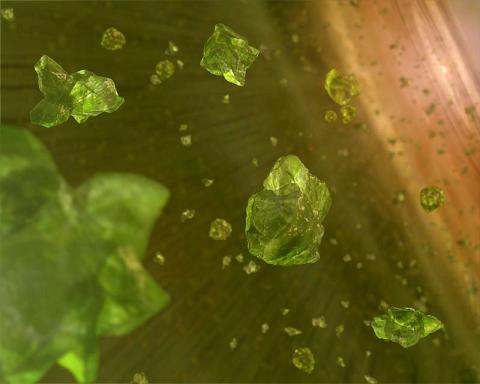The Spitzer Space Telescope discovered for the first time the building blocks used to create planets, around a brown dwarf, thus raising the possibility that failed stars may continue the process of building planets.
Avi Blizovsky

A NASA telescope discovered for the first time the building blocks used to create planets, around a brown dwarf, thus raising the possibility that failed stars may continue the process of building planets.
Until recently, the building blocks - microscopic-sized crystals - that eventually collide to form planets, were seen around stars and comets - considered remnants of the building material of our solar system.
The Spitzer Space Telescope recently located these tiny crystals as well as dust grains surrounding a brown dwarf located 520 light years away in the Chameleon group. The crystals, which are composed of a green substance very common on Earth, known as olivine, are considered the building blocks of the planets.
Brown dwarfs, like stars, are formed from thick clouds of gas and dust, but they collapse under their own weight and are considered the old and dim cousins of the stars.
"We are learning that the first stages of planet formation are much more rigid than we thought until now." said Daniel Apai, an astronomer at the University of Arizona in Tucson.
Astronomers believe that the planets formed from discs of dust surrounding young stars and now also brown dwarfs. The particles that make up the disk eventually crystallize and gather together until planets are formed.
"We watched processed particles bind together and grow." said Dr. Illaria Pascucci, a research partner, also from the University of Arizona. "This is exciting because we were not sure if the disk of such cold objects would behave in the same way as disks of "real" stars behave.
The team also noticed a flattening of the brown dwarf's disk, a sign that dust has collected into planets.
An article describing the findings appeared last Friday in the journal Science.
